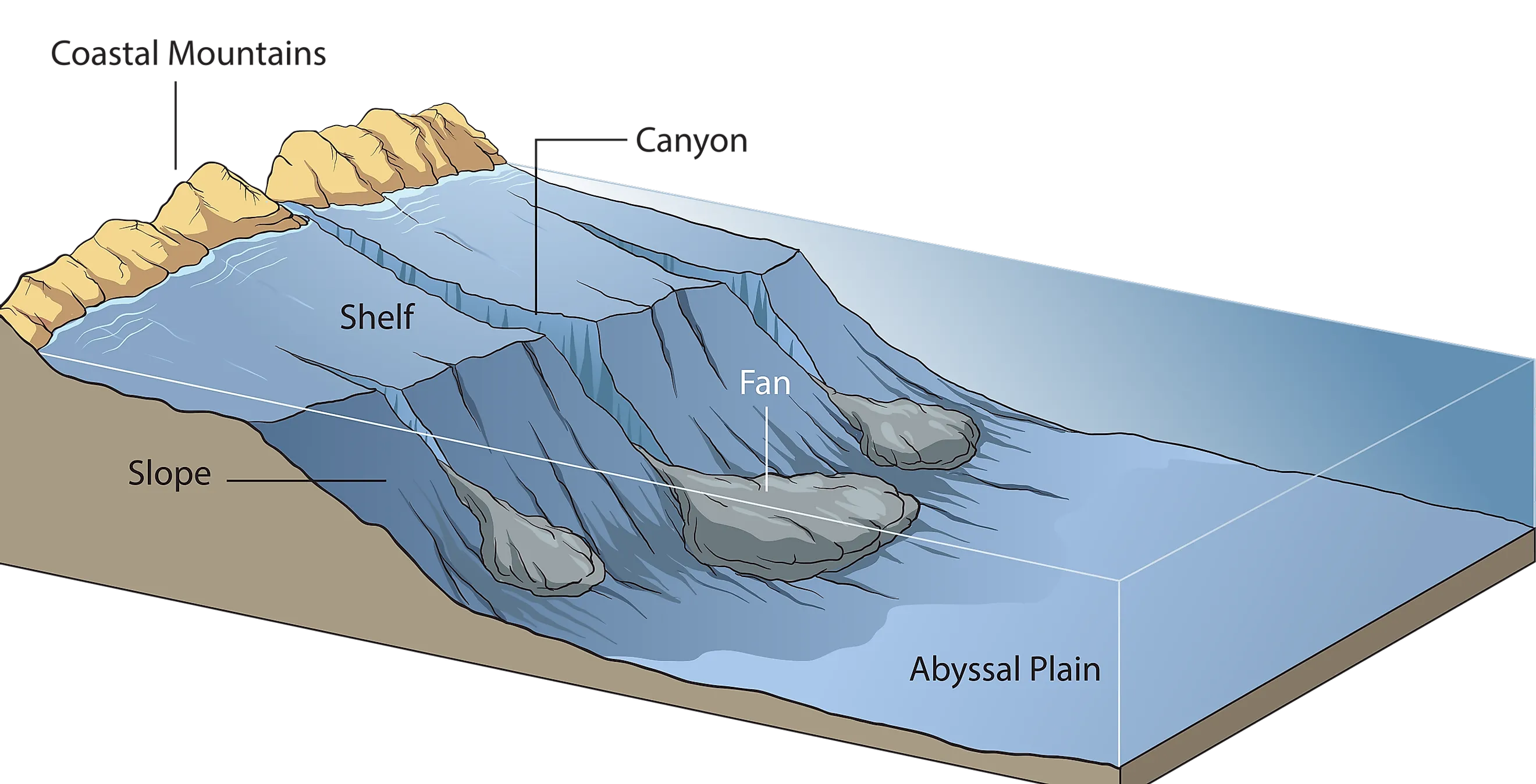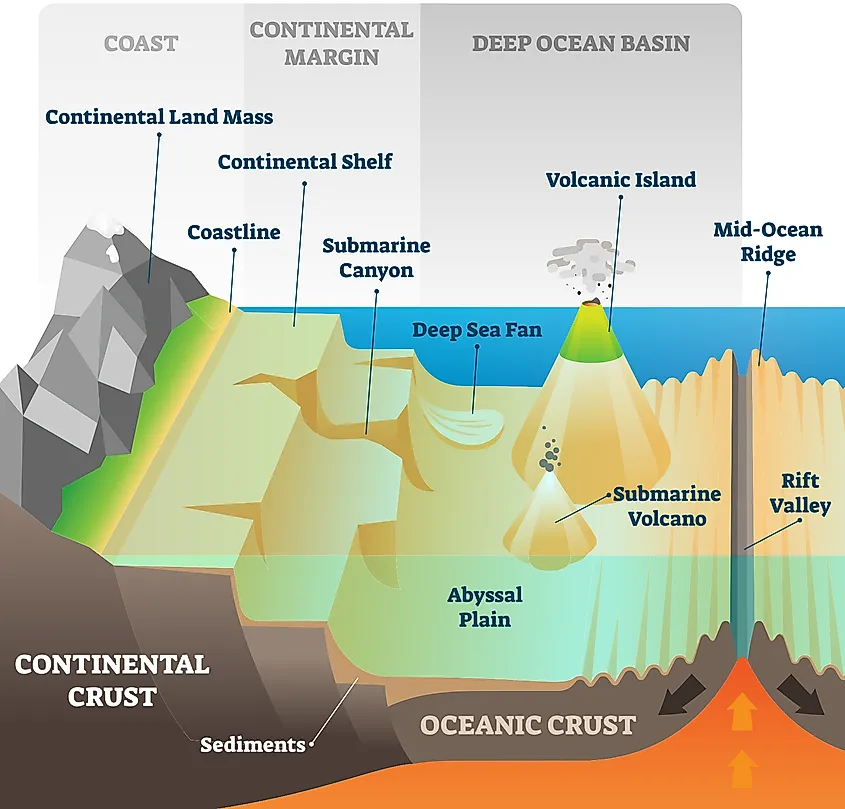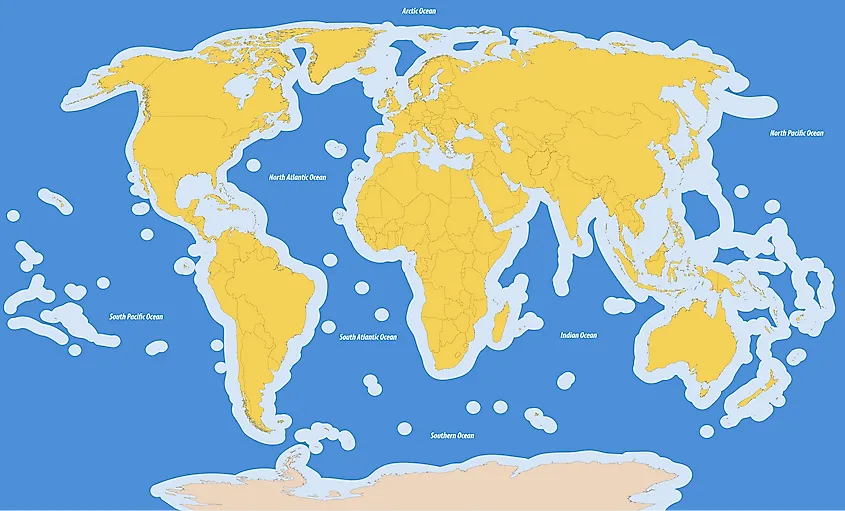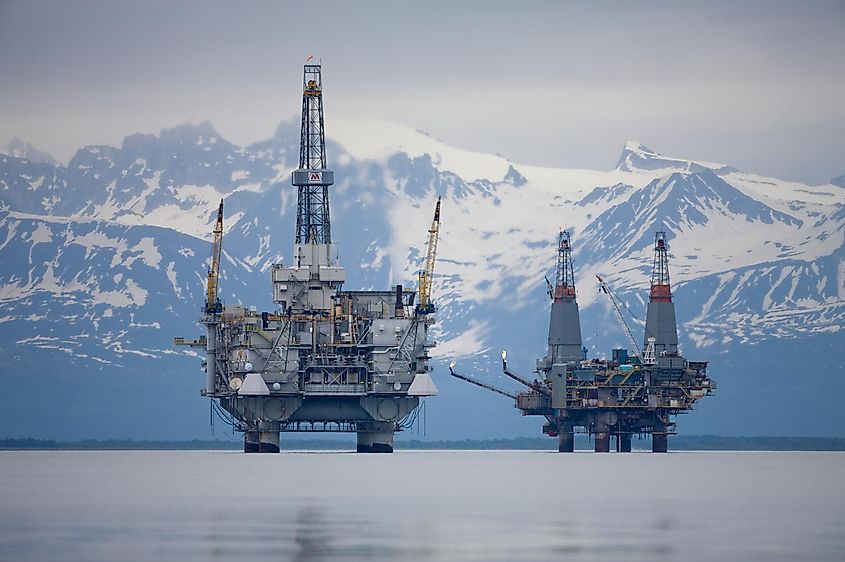
What Are Continental Shelves?
A continental shelf is a shallow submarine terrace of continental crust that forms the continent's landmass edge. These shelves extend from the coastline of a continent to what is known as the shelf break, which is a drop-off point, after which the continental slope descends towards a section of the ocean floor called the continental rise and merges with it at depths of around 4,000 to 5,000 meters (13,000 to 16,500 feet). Continental shelves are part of the continent and its edge marks its boundary. While continental shelves are considered a province of the ocean, they are not part of the deep ocean but are considered the enveloped margins of the continent.
Major Features Of A Continental Shelf
The average width of a continental shelf is about 65 kilometers (40 miles). However, the width of these shelves varies wildly across the globe; in California, for example, the shelf extends to about a kilometer (0.62 miles), while other parts of the planet, such as Siberia, have its shelf extending to a staggering 1,290 kilometers (800 miles). These shelves extend to depths of 100 to 200 meters (330–660 feet) and cover around 27 million km2 (10 million sq mi), which is roughly equal to about 7% of the surface area of the oceans. Continental shelves provide many insights into a continent's geological and biological history and provide many valuable resources for their respective countries to take advantage of.

Formation Of A Continental Shelf
Continental shelf formation is a process that spans many millions of years; organic and inorganic sediments such as bits of rock, soil, gravel, and plant and animal remains are carried by the rivers into the ocean, where they accumulate in layers at the continents' edges. Each layer of sedimentation envelopes previous layers and, in a sense, rewrites the history of the continental shelf leaving only traces of its previous deposit iterations. As new sediments are carried into the ocean, they erode the materials they pass over by scattering the previous sediments and leaving the coarser material. American oceanographer Donald J.P. Swift describes continental shelves as palimpsests, which are manuscripts carrying erased or partly erased texts underneath the apparent additional text. Donald J.P. Swift uses this description to convey the everchanging nature of continental shelves and to point out the prospect of recovering older versions to study and document previous geological and, in some cases, biological iterations of the continents.
Many of the continental shelves we know today were once exposed and considered dryland. For instance, 18,000-20,000 years ago, the Earth was at the peak of its ice age. This means that much of the Earth's water was frozen into glaciers, thereby decreasing the sea level by 100 meters (330 feet) from what it is currently, according to some scientists. This ice age also potentially exposed the continental shelves between North America and Asia, creating a sort of 'land bridge' that people may have used to migrate from Siberia to Alaska, potentially making them the first humans in North America. In addition, biological remains of land-bearing animals and plants were found on continental shelves underwater. Eleven thousand-year-old mastodon teeth and even spruce pollen were found off the coast of the northeastern United States, implying that these land-bearing creatures lived and died on patches of land that have long been submerged underwater.
Redefining International Waters

In the early 1930s, nations realized the importance of their continental shelves and so demanded that international laws be changed to include more than just the 3 miles off the coast as their territory. The United States was the first to lay claims to its continental shelf in 1945. After which, in 1982, the United Nations Convention on the Law of the Sea (UNCLOS) ensured regulation of marine resources and of pollution caused by extracting these resources. In 1994, the United Nations Convention on the Law of the Sea reached a consensus that a continental shelf that borders a country is to be considered a continuation of its lands and territories. More specifically, the extension of the county's land goes out to roughly 370 km (200 nautical miles) from shore or to the outer edge of the continental margin, whichever is further, subject to a limit of 650 km (350 nautical miles). This gives countries the right to the resources located within the defined margins.

These international laws are constantly being regulated and changed in the hopes of attaining fair access to the resources belonging to nations, all the while minimizing any environmental impacts. Continental shelves provide a large percentage of the fossil fuel used on Earth. For instance, 30% of the oil and 20% of the gas produced in the United States is extracted offshore. This makes continental shelves a very important part of both a country's natural geography and economy.










